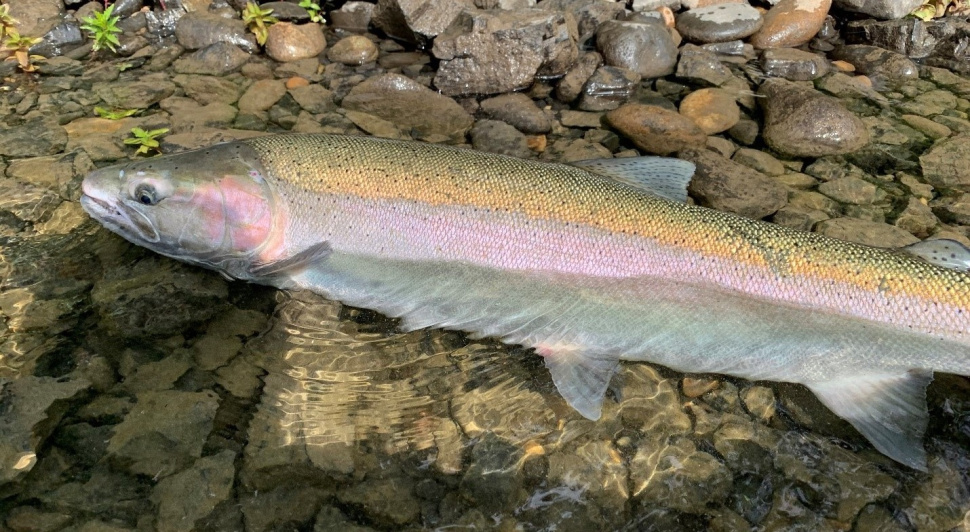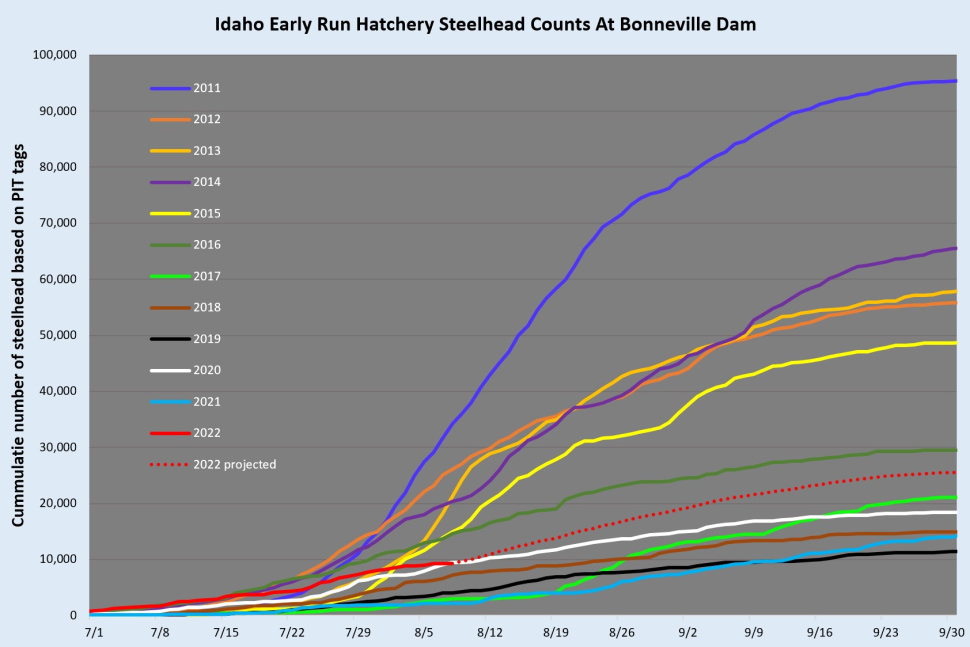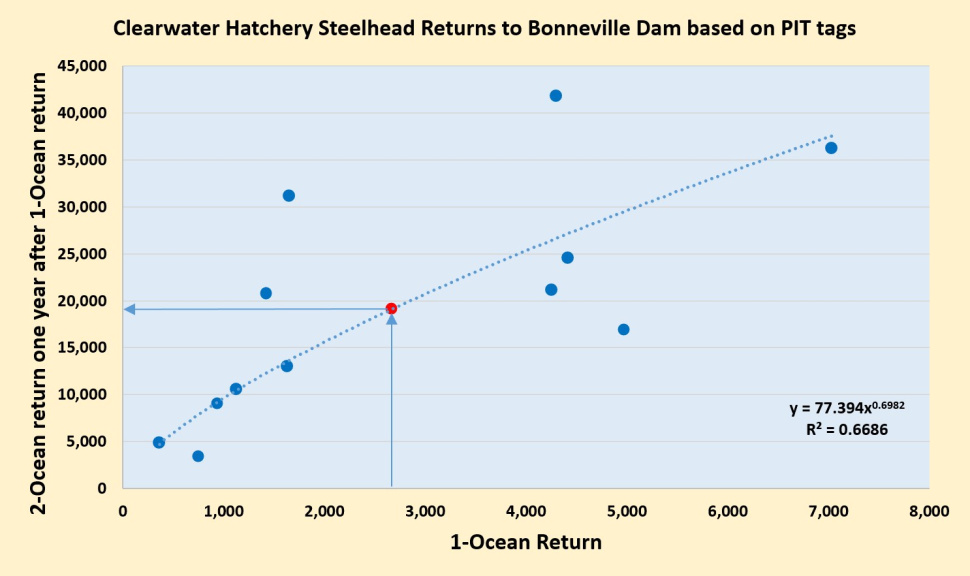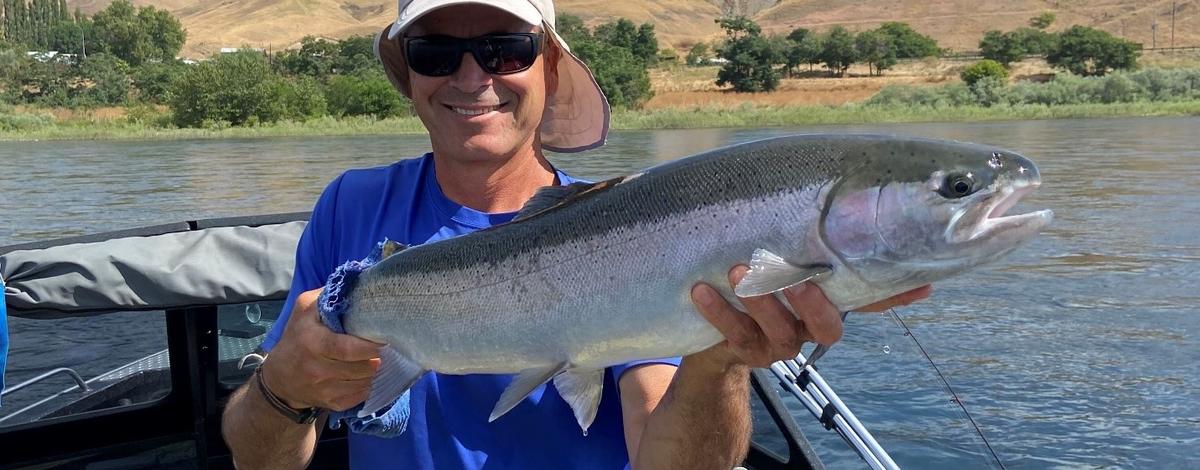Idaho’s Steelhead fishery Update
August 9, 2022

Hi everybody. The steelhead season has started in Idaho, and steelhead regulations have changed in the Snake and Clearwater rivers. So, I thought now was a good time to let you all know what the run is looking like and remind you of what the new regulations are.
Idaho’s Early Summer Run (Upper Salmon, Little Salmon and Snake Rivers)
Right now, the vast majority of Idaho bound steelhead that have been passing over Bonneville Dam are early run summer steelhead. These are steelhead that are destined for the Snake, Little Salmon and upper Salmon rivers. These fish on average pass over Bonneville Dam about a month earlier than fish destined for the Clearwater River, South Fork Salmon River, and Middle Fork Salmon River basins. Based on the average run timing for Idaho’s early run hatchery steelhead, 35% of the run should have passed over Bonneville Dam by now (August 8) which allows us to now forecast what this return will be like.
To help portray how this year’s return compares to past years, I have put together the figure below. Once again, this data is only looking at Idaho’s early run hatchery steelhead which are destined for the upper Salmon, Little Salmon and Snake rivers. This data was developed using PIT tag detections collected at Bonneville Dam and compares the run timing and the runs size over the last 12 years. This year’s return is shown by the solid red line and the dotted red lines shows what we are projecting if this year has an average run timing (35% complete by August 8).

We are seeing some interesting things this year. This year’s return started off looking very promising. In fact, up through July 15, we had detected more PIT tags than any of the previous 11 years. Unfortunately, PIT tag detections have dropped off in comparison to many of the other years, and we now (August 8) estimate that about 9,200 fish have passed over Bonneville Dam which ranks as the 8th best (only 4 years were worse) since 2011. The tricky part is trying to project how many steelhead destined for the upper Salmon, Little Salmon, and Snake rivers are yet to come. The dotted red lines assumes this year's return will have an average run timing. If this projection is accurate, about 26,000 steelhead destined for the upper Salmon, Little Salmon and Snake rivers will ultimately pass over Bonneville Dam. If you look at the run timing curves for the other years in the figure above, you will see that there is a lot of variability with when the runs can pick up which gives us some uncertainty with how many fish will return. One very unusual thing that we are seeing is that 93% of the fish that have passed over Bonneville Dam so far have spent two years in the ocean (7% spent one year in the ocean). For these hatchery stocks, typically about 37% of the fish spend two years in the ocean. What this all means is that it doesn’t look like we are going to have a boomer return to these locations this year, but if the projection holds true, we will have enough returning to Idaho to meet all our broodstock needs without having to restrict our fisheries.
Idaho’s Late Summer Run (Clearwater River Basin Fish)
Hatchery steelhead returning to the Clearwater River basin just started showing up at Bonneville Dam. On an average year, only 2% of the return would have passed over Bonneville Dam by now (August 8) which means there is not much that we can say about this return of fish. However, we can forecast the return of 2-ocean fish (fish that spend 2 years in the ocean) based on the return of 1-ocean fish that returned last year. This is basically the same strategy we use to forecast returns of adult spring Chinook Salmon using the previous year’s return of jacks.
On average, 83% of the hatchery steelhead returning to the Clearwater River spend two years in the ocean, so being able to forecast the 2-ocean return can be very meaningful (assuming we are accurate with our forecast). So, I have done that for you using PIT tag detections at Bonneville Dam, and it is captured in the figure below. The way this figure works is each blue dot represents the number of 1-ocean steelhead that returned past Bonneville Dam on a particular year with the corresponding number of 2-ocean fish that returned the following year. For example, if you look at the blue dot farthest to the right, it tells us that just over 7,000 1-ocean steelhead passed over Bonneville Dam (displayed left to right) and the following year, about 36,000 2-ocean steelhead made it past Bonneville Dam (displayed up and down). The data displayed on this figure covers PIT tag data back to 2009, and the blue dotted line in this figure represent the best fit you can have through all these points. For you stats geeks, the formula for this line is shown in the lower right-hand corner. This brings us to the forecast which is shown by the red dot. Last year, about 2,700 1-ocean steelhead made it to Bonneville Dam (shown by up pointing arrow) which in turn forecasts that about 19,000 2-ocean fish will return this year (shown by arrow pointing to the left). If this forecast is accurate, it means this year’s 2-ocean return will rank as the 7th best in the last 13 years (right in the middle). In 2020, a similar number of 2-ocean steelhead passed over Bonneville Dam, and limit or season restrictions were not necessary.

If you look at the figure above, you will see that in some cases the blue dots fell far from the dotted blue line which means that our forecast would not be very accurate in those years. However, in most cases when this model was way off, more 2-ocean fish return than we forecasted. Let’s hope that is the case this year.
New Steelhead Seasons and Limits
I’m not going to spend a lot of time on this topic because I went over it in detail last year, and you can read that update by clicking on this link (New steelhead regulations 2022-24). However, if you want the abbreviated version, read on. The steelhead seasons and limits for the next three years are shown in the table below. The rivers where there are new steelhead regulations are the Snake River and all rivers in the Clearwater River basin. The only change for the Snake River is the catch-and-release season starts on July 1 whereas the previous three years it started on August 1. The limits during the harvest season have not changed (3 fish daily limits). The seasons and limits in the Clearwater River basin have changed a lot, and if you are not aware of them please study the table below. These changes were made to provide opportunities for both catch-and-release and harvest oriented anglers during both runs of fish that utilize the Clearwater River basin.

I hope your summer is treating you well. Good luck fishing!

